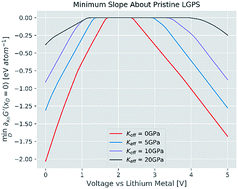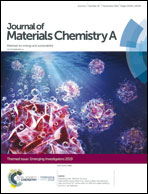The effects of mechanical constriction on the operation of sulfide based solid-state batteries
Abstract
Recent years have seen an explosion in the amount of literature focused on sulfide solid electrolytes for use in solid-state batteries. Successful battery performances based on sulfide solid electrolytes have been reported, while the electrochemical bulk stability of sulfide electrolyte materials and their interfacial stabilities with different high voltage cathode materials remain the current focus of research. Recent studies have suggested that mechanical constriction can introduce energy barriers opposing bulk and interfacial decompositions in sulfide solid-state batteries. These energy barriers have been shown to have the effect of expanding the operating window for sulfide based solid-state batteries. Moreover, the consideration of such mechanical constriction as a design principle introduces a largely neglected degree-of-freedom for next-generation energy storage systems. That is, to design mechanically constrained electrolytes for the purpose of expanding the operational voltage window of solid-state batteries. This review will focus on both the studies leading to and detailing these new understandings as well as exploring, retroactively, the impact of these understandings on this field's previously made conclusions. In particular, the differences in the determined operating window between multiple experimental methods will be evaluated against the mechanical nature of the methods themselves.

- This article is part of the themed collections: Recent Review Articles and Journal of Materials Chemistry A Emerging Investigators


 Please wait while we load your content...
Please wait while we load your content...